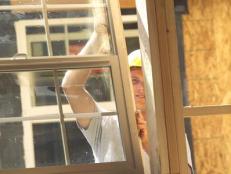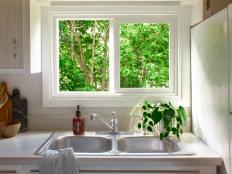Pro Building Tips: Flexible Window Flashing Cuts Moisture Penetration
Installing windows can be tricky. Try it without knowing how to do it right or skip a step, and you run into problems. At a minimum, the warranty will be invalid if the window isn't installed to the manufacturer's specifications. More seriously, if the window flashing is not properly installed, rain water can leak behind the windows and enter walls, where it has the potential to seriously damage the home. Moisture intrusion can lead to mold growth, a cause of unhealthy indoor air. It can also lead to wood rot, which creates structural problems.
A recent paper from the Energy and Environmental Building Association reports that up to 20 percent of all windows leak water. If that's hard to believe, remember that windows are just components assembled from individual elements that are susceptible to leakage at joints.
And if the window itself doesn't leak, most exterior sealants around windows eventually fail. New flexible window flashing products now on the market significantly reduce the potential for moisture penetration around windows.
Good window-flashing techniques must be integrated with the wall moisture drainage plane and can vary by climate. When choosing a flashing material for a northern climate, check product specifications to understand any installation limitations the flashing may have during cold weather. For example, the flashing may only provide good adhesion above a certain temperature or may require additional fastening.
For hot and humid climates, the following six steps illustrate the preferred method of flashing windows for a home with housewrap and plywood or OSB wall sheathing:
Following these steps will minimize the potential for moisture intrusion and contribute to a quality home. Planning for frequent inspections is also important to ensure the windows are installed properly.
For more information visit:
- Lstiburek, J.W. (2002). Water Management Guide. Energy and Minneapolis, Minn.:
Energy and Environmental Building Association - U.S. DOE
- Standard Practice for Installation of Exterior Windows, Doors, and Skylights. ASTM E2112-01, September 2002. West Conshohocken, Pa.
This information is taken from Building America's Builders and Buyers Buyers Handbook for Improving New Home Efficiency, Comfort, and Durability in the Hot and Humid Climate, one of a series that focuses on best practices for all U.S. climate zones. Building America's system design recommendations and process improvements can help all builders interested in re-engineering their home designs to achieve high performance. This best practices handbook helps builders develop durable, comfortable homes that achieve 30 percent energy savings in space conditioning and water heating in hot and humid climates. The handbook contains chapters for every member of the builder's team — from managers to site planners to designers, site supervisors, the trades, and marketers. There is also a chapter to help homeowners select the best systems for their new home.






































